Introduction
When embarking on the creation of a retail website, defining your business model is a foundational step that sets the stage for success. The Lean Canvas, a powerful tool originated by Ash Maurya, enables you to deconstruct your idea into key components and articulate your unique value proposition. As the retail landscape evolves, it's crucial to understand the essence of direct consumer interaction and the ability to cater to various product categories.
In designing your online retail platform, user-friendliness is paramount, requiring the expertise of web design professionals. By deeply understanding your customers and their values, you can make informed decisions that foster an environment where sales can flourish. As the retail industry continues to evolve, agility and customer-centricity remain vital for success.
Defining Your Business Model
When embarking on the creation of a retail website, the foundational step is to meticulously outline your business model. This encompasses the selection of products to offer, pinpointing your intended market, and clarifying what sets your business apart—the unique value proposition. A powerful tool to facilitate this process is the Lean Canvas—a one-page template that enables you to deconstruct your idea into twelve key components. Originated by Ash Maurya, the Lean Canvas is embraced by millions for its efficiency in articulating business models, product launches, or even individual features.
As you cultivate your retail shop business, it's imperative to understand its essence: direct consumer interaction and the ability to cater to various product categories. Today's retail transcends physical stores, as e-commerce has amplified the reach to customers' doorsteps. Harvard Business Review outlines a business model's anatomy, which includes the customer value proposition, profit formula, essential resources, and core processes—all crucial elements that contribute to delivering value consistently and at scale.
Moreover, in designing your online retail platform, user-friendliness is paramount. A seamless and engaging user experience is what will keep potential customers browsing and ultimately, converting. This can often mean partnering with web design experts who can leverage contemporary techniques and technologies to build an effective online presence quickly.
Remember, each decision you make—from website design to marketing tactics—should be informed by a deep understanding of who your customers are and what they value. Such insights are not only fundamental to building your retail website but also to fostering an environment where sales can flourish. With the retail landscape ever-evolving, as evidenced by innovative concepts like checkout-free stores, it's clear that agility and customer-centricity are at the heart of retail success.
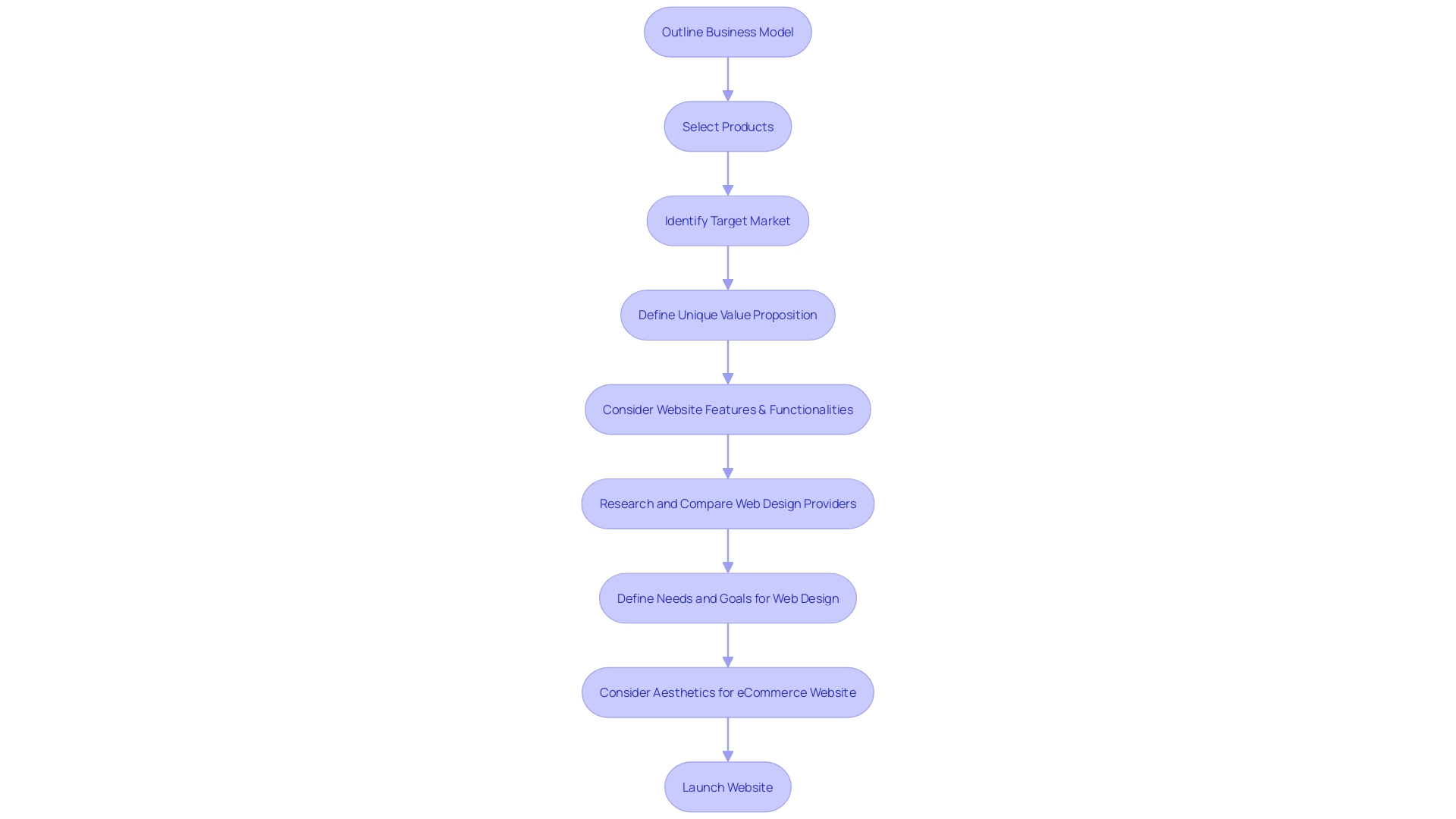
Registering Your Business and Choosing a Niche
Registering your business and identifying a distinct market niche are pivotal initial steps in carving out a successful e-commerce platform. Securing your business registration not only legitimizes your operations but also provides a shield for your brand's identity. Focusing on a niche does more than streamline your target audience; it facilitates a deeper connection with your customer base, mirroring the discernment used in personal gift-giving. Just as selecting a thoughtful gift reflects an intimate understanding of the recipient, choosing a niche allows you to tailor your offerings and resonate with the specific needs and preferences of your market segment.
The effectiveness of this approach is illustrated by the founders of Custom Neon, who recognized a market gap when they struggled to find a custom neon sign for their son's room. By combining their e-commerce and social media marketing expertise, they tapped into the demand for personalized neon signage, initially leveraging their own wedding as a showcase. This strategic move, supported by user-generated content and word-of-mouth, allowed them to grow the business without immediate advertising costs.
In the beauty industry, entrepreneurs find that grants can be the catalyst for launching or expanding their ventures. Grants help cover costs like equipment purchases, inventory, or rental space and even facilitate the development of innovative products or services. This external funding can be crucial for those aiming to differentiate their offerings in a competitive market.
When contemplating a retail business, whether it's a cozy physical shop or an expansive online store, it's essential to understand its essence. Retail businesses are defined by direct consumer interaction and a diverse product range. They are the immediate touchpoints for customers in commerce. In today's retail landscape, the ability to pivot and adapt to online models is crucial for survival and growth.
To launch with clarity, define the unique value you bring to customers in a concise statement. A focused message resonates more effectively than a cacophony of mixed signals. As the Global State of Business Analysis Report suggests, understanding the industry's current state is vital to overcoming challenges, a principle that holds true for any entrepreneur venturing into the realm of retail and e-commerce.
Establishing Your Brand Identity
Creating a distinctive brand identity is more than just a visual exercise; it's about communicating the essence of your company to the marketplace. A comprehensive brand book is an indispensable tool for achieving this. It should encapsulate your mission, values, and objectives, providing a clear understanding of your company's raison d'etre. This reference material assists in maintaining consistency across all forms of communication and design, ensuring that every aspect of your brand aligns with its core identity.
Your logo serves as the cornerstone of your brand's visual identity. It's crucial to have a versatile logo with different size, color, and format variations to maintain brand recognition across various mediums. Typography also plays a significant role, as consistent use of fonts helps in reinforcing brand identity across your website, marketing materials, and any digital or print communication.
Understanding your brand's personality and voice is essential. Whether your brand comes across as professional, friendly, authoritative, or relaxed, this personality should be reflected in the way you communicate. A curated list of adjectives, phrases, and words associated with your brand guides the tone of content and interaction with customers, fostering a connection that resonates with your target audience.
Market research is vital to tailoring your brand to the evolving landscape. Awareness of consumer behavior and industry trends informs your branding strategy, making it a dynamic process that evolves with your audience's needs and preferences. In today's market, authenticity and empathy are key to forming deeper connections with consumers and building loyalty. As statistics reveal, a significant percentage of consumers seek genuine brand interactions, and their loyalty can be severely impacted by negative experiences.
Ultimately, a well-defined brand identity is a strategic asset that distinguishes your business in the marketplace and shapes customer expectations. It's a comprehensive effort that aligns your company's values with the experience you deliver, setting the stage for lasting customer relationships and business success.
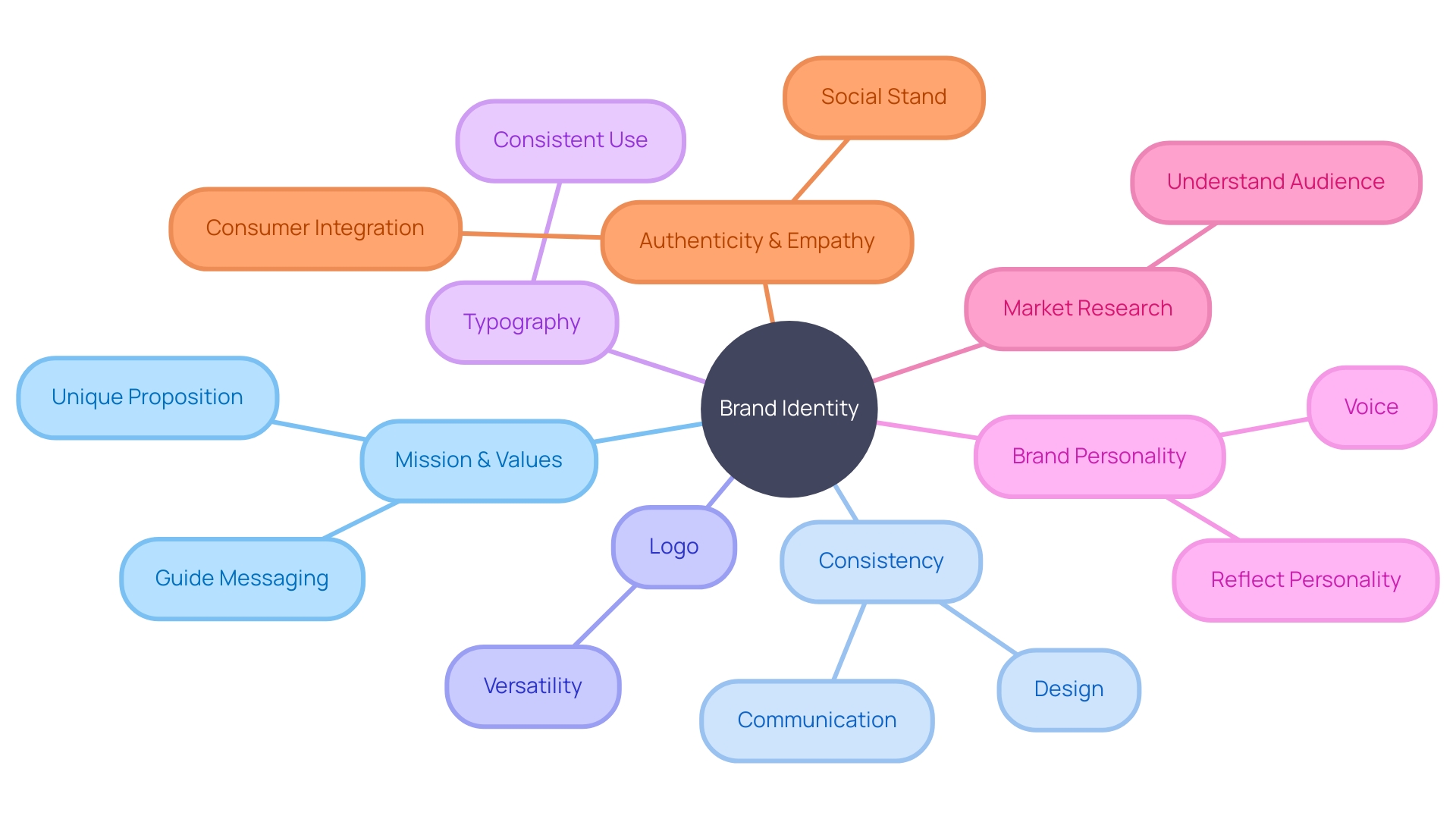
Selecting an E-commerce Platform
Selecting the ideal e-commerce platform is a critical decision that can greatly influence the success of your online retail store. Factors to consider include the platform's user-friendliness, scalability, ability to be customized, and the ease with which it can integrate with other systems. Major platforms such as Shopify, WooCommerce, and Magento offer a diverse range of features and pricing plans to fit different business requirements.
Shopify stands out with over 4.3 million active sites and a significant market share, especially in the United States. It's praised for its intuitive drag-and-drop interface, which allows individuals without coding skills to set up a store with relative ease. WooCommerce offers a flexible solution for those already familiar with WordPress, providing a seamless blend of content management and e-commerce features. Magento, on the other hand, is often the choice for larger enterprises requiring robust customization options.
When evaluating platforms, consider the success of Chess.com, which attributes its growth to a stable and scalable IT infrastructure. Similarly, Filson's use of a customizable forecasting model for their e-commerce sales highlights the importance of adaptability in online retail. The choice of platform should support your business's ability to grow and adapt to changing market trends, ensuring that your website remains a compelling destination for customers.
Designing Your Website
The aesthetics of your e-commerce website are critical in fostering a connection with your customers. The visual appeal and functionality of your site should be a reflection of your brand, compelling visitors to explore further. It's essential to prioritize a layout that is intuitive, with clear navigation that guides users seamlessly from one product to another, much like a well-orchestrated retail scene that tells a brand's story from beginning to end.
Typography and imagery are not just design elements; they are the voice and face of your brand online. They should be consistent with the overall user experience you aim to deliver. With over 50% of consumers unlikely to purchase from a company with a poorly designed mobile site, ensuring your website is responsive across devices is not optional—it's imperative.
In fact, mobile sites that load in two seconds or less see a 15% higher conversion rate. Considering that nearly half of all web traffic originates from mobile devices, and that users exhibit a strong preference for sites that are not just visually appealing but also performant, the design of your e-commerce platform must be optimized for speed and ease of use to meet customer expectations. A mobile-optimized site is not just about being user-friendly; it's a strategic advantage that can lead to increased sales and customer loyalty.
Innovations in retail technology, such as checkout-free experiences powered by advanced systems like Zippin, are setting new standards in customer convenience and satisfaction. This is a cue for online retailers to ensure their websites match the evolving expectations of tech-savvy consumers. By aligning your web design with these principles, you can create a platform that not only captivates your audience but also drives conversions and enhances your brand's digital presence.
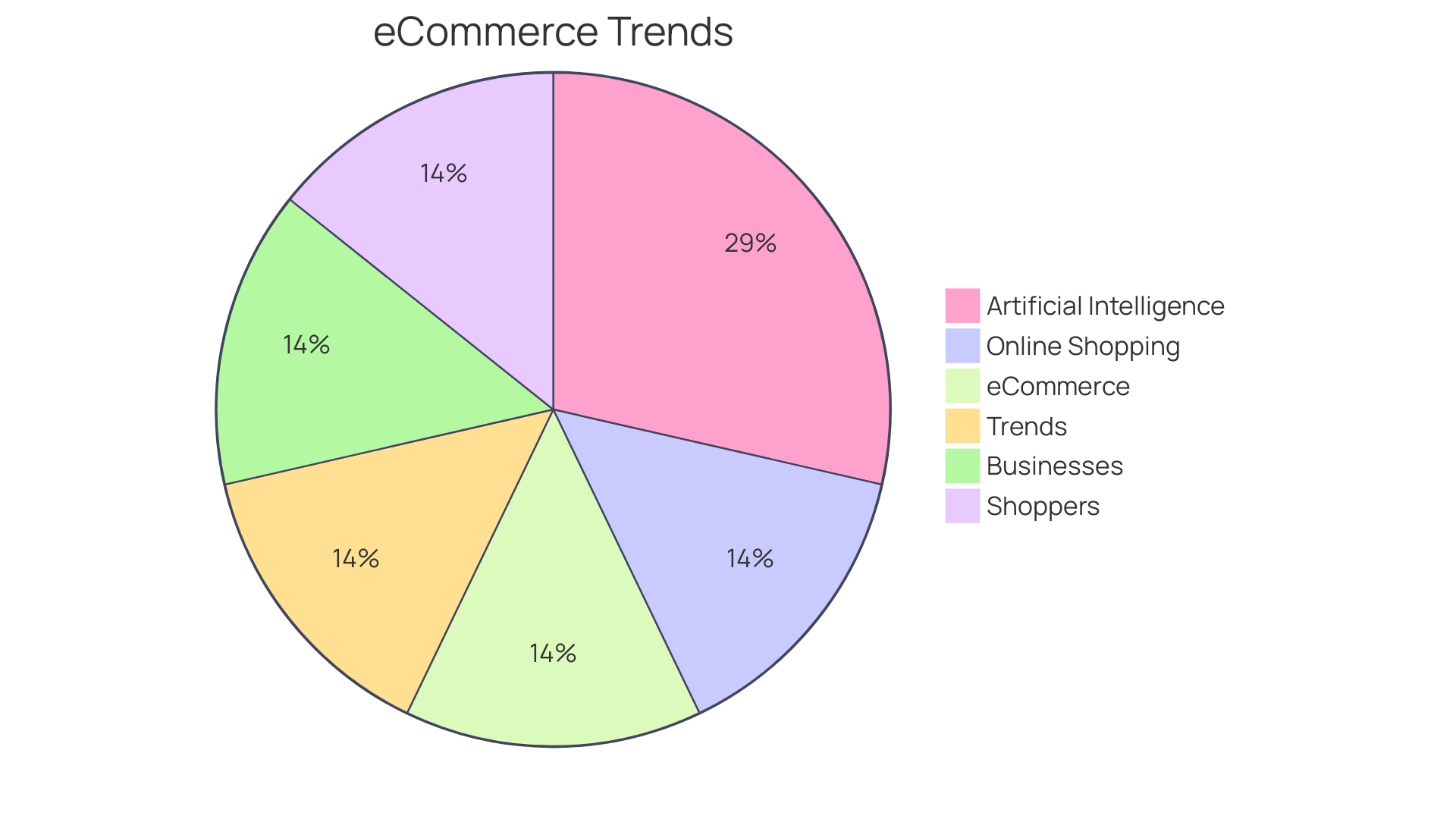
Customizing Your Website Template
Leveraging the flexibility of e-commerce platforms, online retailers have the opportunity to sculpt their website's visual identity, which is crucial in a market where consumer expectations are sky-high. Customization of templates is more than just tweaking colors and fonts; it's about crafting a cohesive visual brand that resonates with your audience. For example, Artemii Lebedev's project for Alexandra Murgu's film industry portfolio website, Armor, demonstrates the power of a site reflecting personal creativity and vision while maintaining functional patterns across pages.
Moreover, as web design agency Numiko highlights, web design trends are evolving, with a significant uptick in personalized shopping experiences. The Ford Foundation's overhaul of their CMS to better serve their audience illustrates the importance of a website's ability to adapt and cater to increased content demands. This level of personalization is not just about aesthetics, but also about creating intuitive user experiences, like implementing relevant filtering features that assist customers in finding exactly what they need, as seen in websites that suggest products based on the user's location.
Statistics show that a well-designed website significantly impacts customer perception and trust, with a visually appealing online store creating a positive first impression. As we look at the top web design trends and data for 2024, it's clear that the integration of personalization and functionality will continue to be paramount for e-commerce success. Remember, your website is the digital storefront for your brand; make it count.
Creating Essential Pages for Your Website
To craft a retail website that not only informs but also captivates and converts, it's essential to focus on creating a user experience that is consistently pleasant and effective. Starting with a solid foundation, using an efficient technical stack like Django and Tailwind combined with HTMX can ensure your site is robust and responsive. Tailoring your site's content to meet the needs of your target audience is key. By analyzing competitor traffic and identifying high-value pages and keywords, you can create a roadmap for content that directly addresses the search intentions of your visitors.
The homepage, the virtual "front door" of your site, should answer the critical question of every visitor—"Am I in the right place?" This means avoiding vague headers and instead, clearly articulating your value proposition. Remember, the homepage serves as a primary entry point and a vital anchor for visitors, so ensuring that each page includes direct links to the homepage is non-negotiable.
Product pages are where the features and benefits of your offerings come to life. By drawing inspiration from successful design studios and product marketing strategies, your product pages can become more engaging, providing immersive experiences that highlight your brand's culture and initiatives.
An 'About Us' page is an opportunity to share your story and connect with your customers on a personal level. It's where you can transform your branding and communicate your vision, much like Vendredi Society did, by incorporating elements from 3D, UI, motion design, and copywriting to convey the essence of your brand.
Don't overlook the power of a well-crafted 'Contact' page. It's not just a utility but a touchpoint for customer trust and assurance, ensuring they can reach you when needed.
Finally, a 'FAQ' page is indispensable for preemptively addressing customer concerns and reducing the burden on customer support. By providing clear, concise answers to common questions, you can streamline the customer journey, leading to increased satisfaction and conversions.
As trends evolve and AI takes center stage, it's important to harmonize visual appeal with performance. The drive towards bold typography, maximalism, and nature-inspired designs should be balanced with the need for quick loading times, creating a delightful yet efficient browsing experience for your customers.
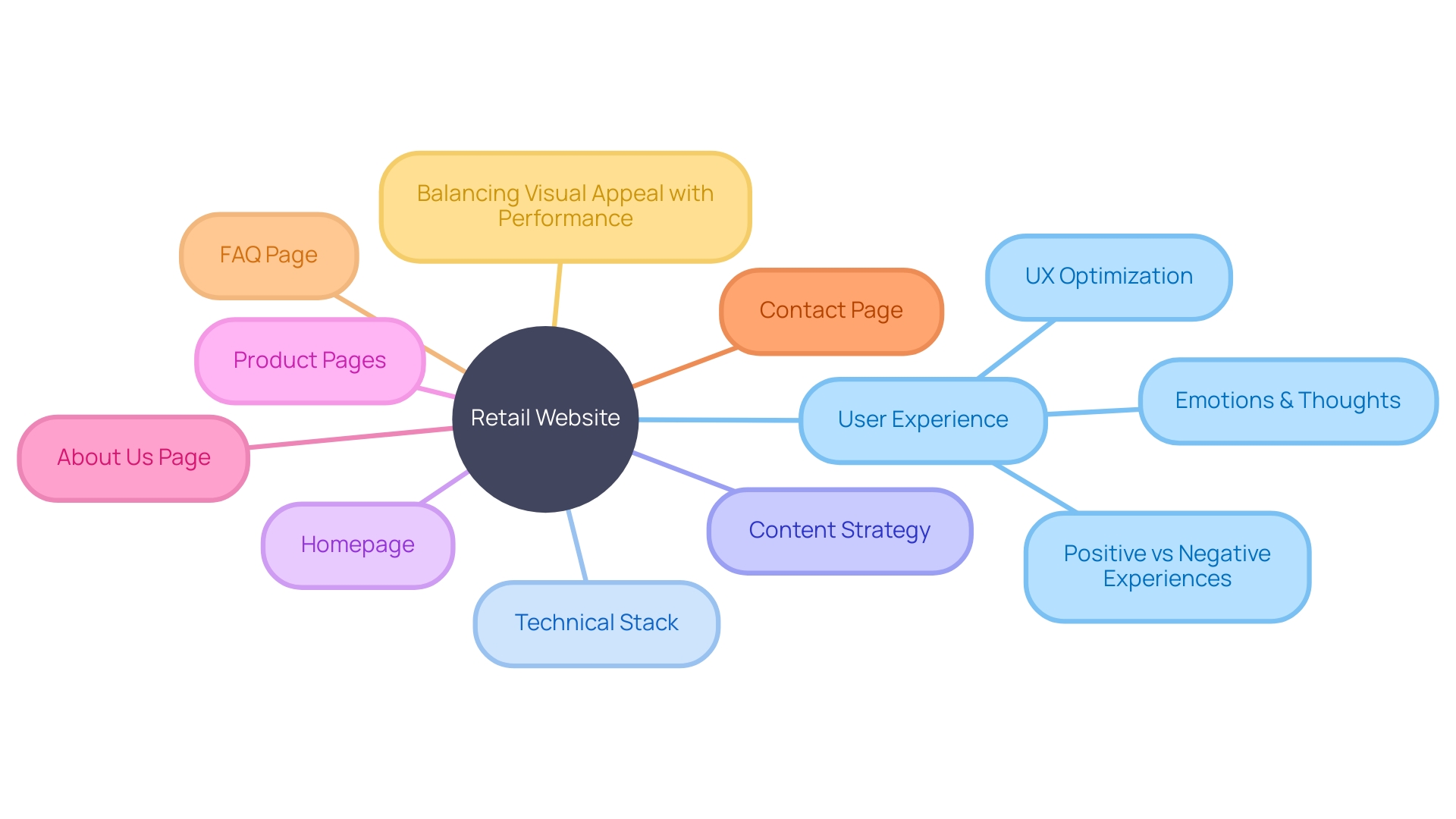
Loading and Organizing Products
Creating a retail website that captivates and retains customers requires meticulous attention to detail, particularly in the presentation of your product catalog. Prioritize crisp, high-quality images that load quickly to immediately capture shoppers' attention. As customers are eager to view products, their satisfaction with image quality and swift loading times can lead to increased exploration and purchase likelihood.
When it comes to navigating your product offerings, consider implementing a user-friendly interface for sorting your products. A dropdown menu that allows shoppers to sort items by popularity, price, or new arrivals, for example, can enhance the user experience. This feature, integrated with pagination to divide product listings into manageable pages, ensures that customers won't be overwhelmed by numerous products and can easily find what they're searching for.
Filters are another critical component, allowing customers to streamline their search based on relevant product attributes such as category, size, color, or price range. A well-structured product database that serves as a comprehensive source of truth for all product details can significantly support these features. It's essential to have your product database meticulously organized with detailed attributes to facilitate this functionality.
As retail technology advances, take inspiration from innovative solutions like the checkout-free store in Dublin Airport, powered by Zippin technology. This store leverages cameras and sensor shelving to detect purchases, offering a glimpse into the potential future of online retail experiences where convenience is paramount.
Finally, SEO optimization is crucial for drawing in potential customers. By identifying and utilizing relevant keywords throughout your site, you can improve your search engine ranking and visibility. Coupled with engaging, quality content that resonates with your audience, these strategies will not only attract visitors but encourage them to stay longer and potentially share your content, expanding your reach.
Remember, the goal is to create an intuitive, efficient, and pleasant shopping experience that encourages customer engagement and drives sales. By focusing on these key elements, you can build a retail website that stands out in the digital marketplace.
Setting Up Payment and Shipping Methods
Crafting a retail website that resonates with customers involves meticulous attention to payment and shipping procedures. A diverse array of secure payment gateways can cater to various customer preferences, enhancing the overall shopping experience. Transparency in shipping policies, costs, and delivery times - coupled with real-time tracking - instills confidence in customers, as seen with industry leaders where clear pricing strategies are a key competitive edge.
Reflecting on payment services like Mercari's Bitcoin function, it becomes apparent that familiarizing customers with payment options is essential. Despite the allure of emerging cryptocurrencies, a significant number of users remain unsure of their practical application. This underscores the importance of not only offering multiple payment avenues but also ensuring customers understand and trust them.
The seamless integration of payment processes is a critical factor in fostering customer loyalty, as noted by Dan Edelman from American Express. The modern consumer expects swift and effortless transactions, indicative of the digital-first environment we inhabit. Retailers must avoid the pitfalls of cumbersome payment experiences to prevent cart abandonment and ensure repeat business.
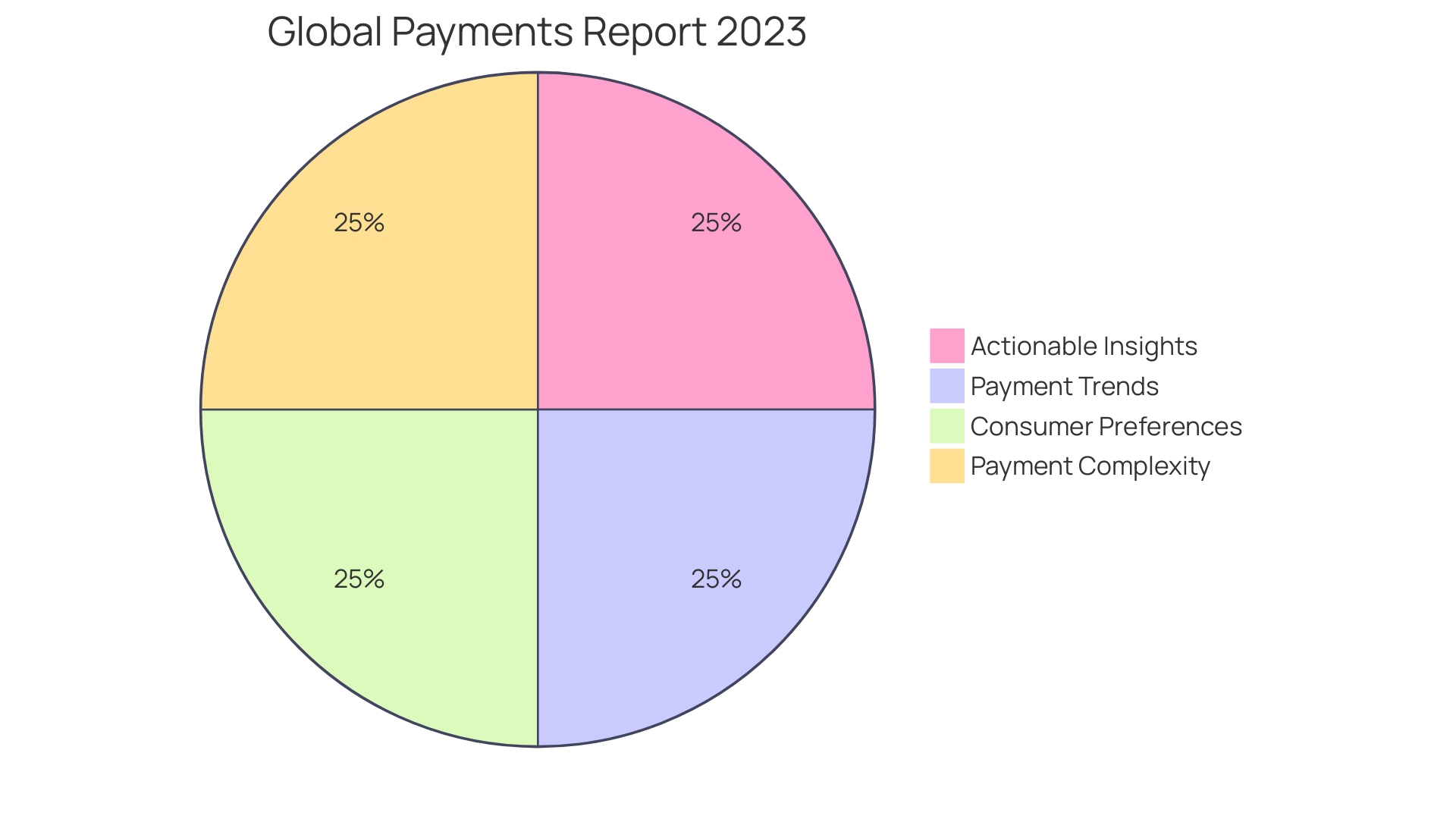
Ensuring Legal Compliance and Security
In the realm of e-commerce, the intricacies of website analytics and the importance of a user-friendly experience cannot be understated. Consider the humble cookie—not the kind you eat, but the digital trackers that play a critical role in customizing the user experience. They resemble the once-guarded cookie jars of our childhood, but now, they come with legal strings attached. Retail websites must secure explicit consent from users to collect and utilize their data via cookies. Failure to do so may result in severe penalties, as highlighted by Reflectiz's intervention in a retail client's cookie policy misstep, preventing potential fines and legal challenges.
Adhering to data privacy guidelines is also paramount. With GDPR in Europe, and similar regulations globally, transparency in data processing and minimal data collection based on consent are the cornerstones of legal compliance. As Clive Humby famously stated, 'data is the new oil,' making it a valuable and sensitive commodity. Retailers must recognize that 79% of mobile shoppers prioritize data privacy, a concern that cannot be ignored.
Creating an accessible online shopping experience is equally vital. With the European Accessibility Act mandating digital accessibility, considering the needs of all users, including the 27% of Europeans with disabilities, is not only a legal obligation but also a moral one. Assistive technologies like screen readers, keyboard navigation, and voice control are essential for making e-commerce inclusive. By integrating these principles into retail website design, businesses can ensure a secure, compliant, and user-centric platform that resonates with customers and stands the test of legal scrutiny.
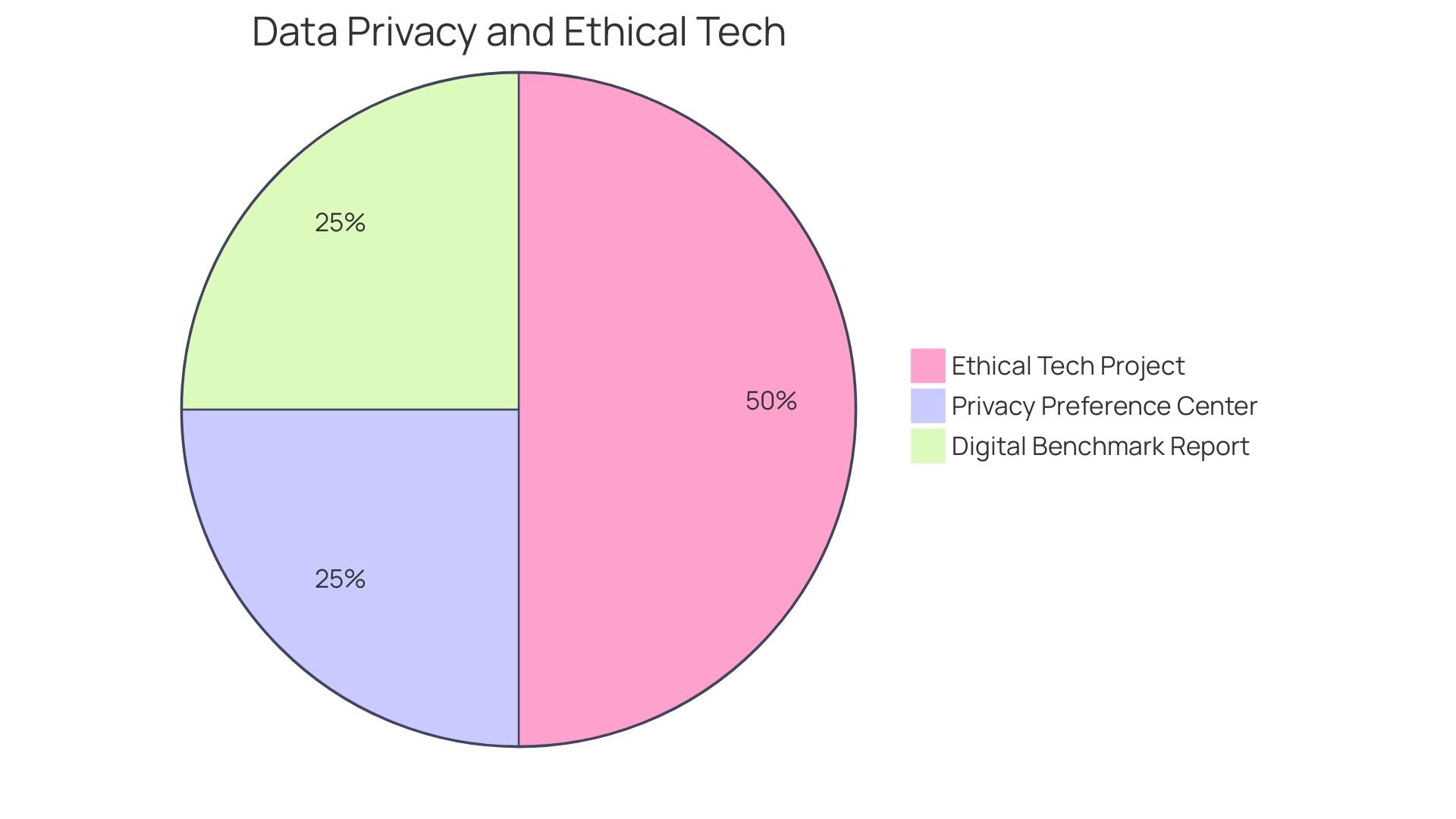
Testing and Launching Your Website
Ensuring your retail website's functionality and usability is paramount before going live. Rigorous user testing is critical to uncover any potential issues, allowing for improvements that enhance the user experience. It's essential to verify the proper operation of every link, button, and form. Once the site is operational, meticulous monitoring, especially in the early stages, is key to promptly addressing any issues that arise.
Retailers like ShoppersStop.com understand the importance of a unified view of the customer and inventory across their e-commerce and physical stores. Their success underscores the significance of seamless integration in today's omnichannel retail landscape. Similarly, the innovative design of Vendredi Society's website showcases how every element, from visuals to copywriting, contributes to a cohesive brand story that resonates with customers.
Recent developments, such as the launch of MediaMarkt's flagship stores, which blend technology, innovation, and customer experience, and Amazon's Second Chance Store in London, highlight the evolving nature of retail. These examples demonstrate how a robust online presence, combined with an engaging physical experience, can capture consumer interest.
The design of an e-commerce site is more than aesthetics; it's about creating a user-friendly environment that encourages visitors to stay and make purchases. As Natalie Berg, a retail analyst, notes, retailers must continually adapt to a rapidly changing market through innovation and technology to remain relevant and successful.
Digital technology remains a critical enabler for retail brands, as those who embrace digital transformation tend to outperform their peers. With over 30% of the global population shopping online, creating a compelling digital experience is crucial. Retailers need to focus on delivering informative content that answers consumer queries early in the buying journey, moving beyond a mere keyword focus to truly stand out in today's competitive digital landscape.
Promoting Your Website with Digital Marketing
To elevate your retail website and drive substantial sales growth, it's essential to harness the synergy between your online and offline channels. This integrated approach caters to the modern consumer who is channel-agnostic and values seamless interactions, whether they're clicking through your site or walking into your store. Take inspiration from MediaMarkt, Europe's largest electronics retailer, which successfully melds its expansive digital presence with a robust network of physical stores, enhancing customer experience regardless of where the purchase happens.
Implementing a digital marketing strategy that encompasses SEO can significantly boost your visibility in search engine results. But it's not just about ranking higher; it's about creating a cohesive digital experience that captivates shoppers from the outset of their buying journey. Retailers can no longer rely solely on keywords; today's landscape demands informative content that addresses consumer inquiries proactively.
Social media platforms are another powerful avenue to connect with your audience and promote your offerings. With billions of users across various networks, these platforms offer unprecedented opportunities to engage customers and showcase your brand's unique story.
In the realm of advertising, targeted online campaigns can place your products in front of potential buyers, tailored to their demographics, purchasing history, and preferences. This level of personalization ensures that your promotions resonate more deeply with your audience.
Moreover, content marketing stands as a pillar in establishing your brand's authority. By providing valuable information, you position your brand as an expert in the field, fostering consumer trust and loyalty.
Utilizing these strategies, your retail website can not only compete but thrive in today's digital-first marketplace. Remember, it's about more than just traffic; it's about creating an immersive, informative, and interactive experience that transforms visitors into loyal customers.
Post-Launch Maintenance and Optimization
Retail websites that captivate their audiences are more than just virtual storefronts; they're the foundational touchpoints of a modern shopping journey. Today's savvy consumers begin their research online, assessing products, comparing prices, and gauging value. To connect with these shoppers early in their decision-making process, it's essential to craft an immersive digital experience that not only draws them in but also provides the information they seek.
This is no small feat in an era of digital disruption where competition is fierce. Retailers must elevate their online presence to achieve higher search engine rankings. This involves leveraging structured data (schemas), crafting compelling product descriptions, and optimizing local listing pages. The outdated strategy that heavily relied on keywords is now obsolete; the focus has shifted to delivering rich, informational content that preempts consumer queries.
Moreover, with the dynamic nature of online retail, continuous monitoring and refining of website performance is paramount. Enhancing page load speeds and user experience, along with incorporating new features, keeps a website on the cutting edge. For instance, the innovative checkout-free store in Dublin Airport, using Zippin technology, exemplifies how embracing new developments can streamline the customer experience.
Furthermore, the omnichannel approach is redefining retail success. A unified view of the customer and inventory across all sales channels, from physical stores to e-commerce platforms, enables a seamless shopping experience. It's about understanding the customer's journey and harmonizing it with inventory management.
For the modern retailer, staying ahead means investing in technology and integrating advancements that refine the shopping experience. From payment solutions to inventory management, the use of cutting-edge technology is vital in sculpting a personalized and efficient customer journey.
In conclusion, building and nurturing a retail website is a continual process that demands a blend of strategic content, SEO, and technological innovation. It's about anticipating and answering consumer questions before they even step into a store, thereby cementing a retailer's position at the forefront of the buyer's mind.
Conclusion
In summary, when creating a retail website, defining your business model is crucial. The Lean Canvas helps deconstruct your idea and articulate your value proposition. User-friendly web design and understanding your customers' values are paramount for success.
Agility and customer-centricity are vital in the evolving retail industry. Registering your business and choosing a niche allow you to tailor your offerings and resonate with specific market segments. Grants can be crucial for launching or expanding your venture.
Creating a distinctive brand identity, with a comprehensive brand book, helps communicate your company's essence. Selecting the ideal e-commerce platform, like Shopify or WooCommerce, is critical for success. Designing your website with visual appeal, functionality, and mobile optimization fosters a connection with customers.
Customizing website templates, ensuring legal compliance and security, and conducting rigorous testing before launching are necessary steps. Seamless integration across online and offline channels enhances the customer experience. Digital marketing strategies such as SEO, social media, targeted advertising, and content marketing drive visibility and engagement.
Post-launch maintenance and optimization are crucial to stay ahead. Continuously refining website performance, embracing new technologies, and adopting an omnichannel approach are key.
In conclusion, building and nurturing a retail website demands strategic content, technological innovation, and a customer-centric approach. Anticipating consumer needs, delivering an immersive digital experience, and staying ahead of industry trends position your website for success.





